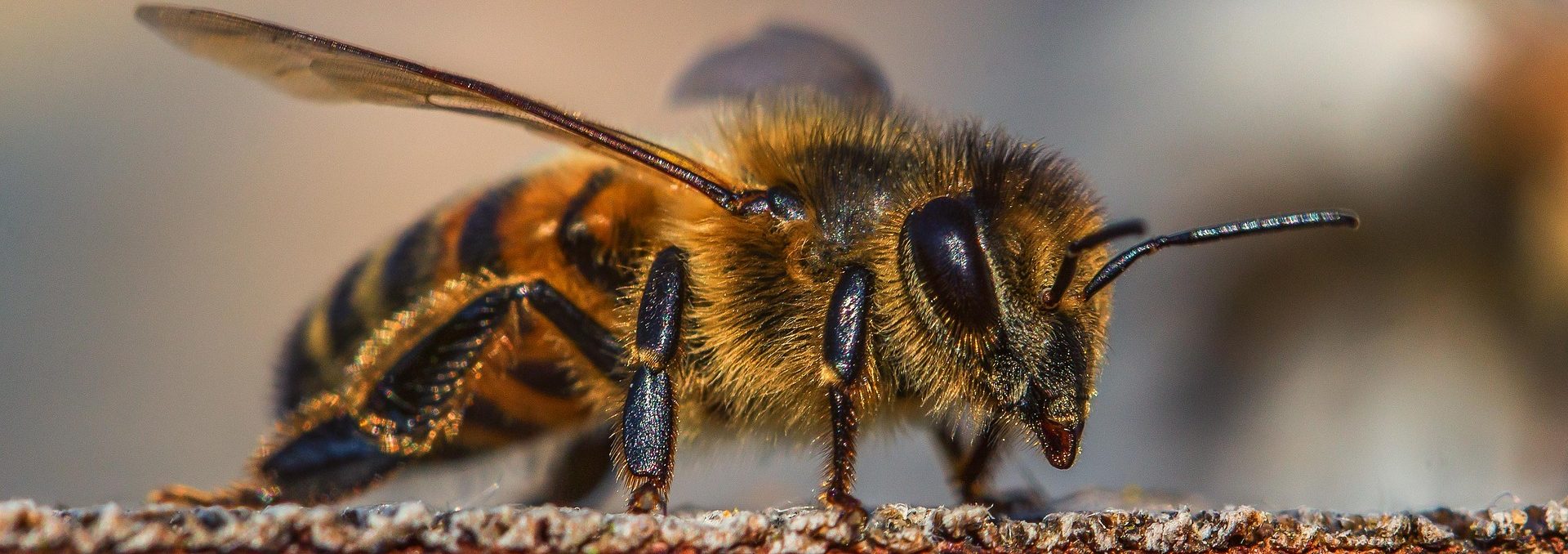So, on the basis that you have found your way to a page called “Begin in Bees” we will assume that you are either considering becoming a beekeeper or you are indeed new to beekeeping.
First things first. This section of our website is not intended to turn you into the perfect beekeeper or indeed to replace any training programs that you may be considering. It is simply a place to help you start your journey with some thoughts and ideas that may help you progress towards becoming a beekeeper. It should also be said that if you talk to 100 beekeepers and ask them about keeping bees you would likely get 100 different replies on how to go about it. So our first recommendation is – join a bee club and talk to as many beekeepers as you can!
Do you really want to keep bees?
Some people romanticise the idea of keeping bees. They think of only the simple or pleasurable aspects of the hobby. Just get a hive, put it in the garden and in no time we’ll be eating some honey. Well maybe not quite that simple , but you get the idea. But you also need to think about getting stung (if you keep bees, you will get stung!), working outside in 40 degrees, seeing disease decimate your hive, or clearing honey off the steering wheel of your car.
So if you are still reading and haven’t changed your mind, let’s begin….
Begin in Bees
Below is a list of items to consider (which will grow over time) but will hopefully save you some time, money and inconvenience.
- In Queensland, all beekeepers must be registered, so first of all, get registered. To do this contact the Queensland Government. Being registered doesn’t entitle you to keep bees, it just registers you. You need to comply with both the biosecurity laws and any local laws as well. Not all local authorities allow beekeeping, so it might be wise to check before you put 25 hives on your apartment balcony!
- Next join a club. You may not want to be a highly social member of the beekeeping community, but there are a few things that are difficult (if not impossible) unless you know a few other beekeepers. Acquiring healthy bees and reliable equipment at least, but most of all knowledge of beekeeping practices and bee health management.
- Before you get your bees you need to do a bit of preparation work.
- Where are you going to put them? Whilst you don’t need a farm, you do need somewhere safe where your bees are not going to be a nuisance to others. Local authorities take a dim view of beekeepers that are inconsiderate to others. They regularly have to deal with disputes from bee stings to unwelcome bees in pools. Bees need a lot of water in warm weather and if your next-door neighbour’s pool is the nearest supply, that’s where they will go.
- Your site should ideally be away from prying eyes.
- Consider the bee’s flight path. i.e. when they exit and enter the hive, are they flying in your property or next door. Something as simple as placing a high solid fence facing the hive can solve such issues as the bees will rise above the fence and consequently people’s heads to enter and exit the hive.
- Also think about the prevailing wind and the sun. Bees don’t really like the wind so avoid having it blow in the front door if possible.
- Bees like to be warm but not too warm. Again if possible, have your hives where they get morning sun. It will get them up early and out foraging particularly in cooler months.
- Build a stand for your hives as in Queensland, cane toads like to dine on bees. Lifting the hive about 30 cm or so off the ground helps avoid this and, as a bonus, saves your back when working with them.
- Take your time to get a good location as it can be difficult to move them once they are there. Bees can get lost if you move the hive within a small area without due care.
Continued on next page
